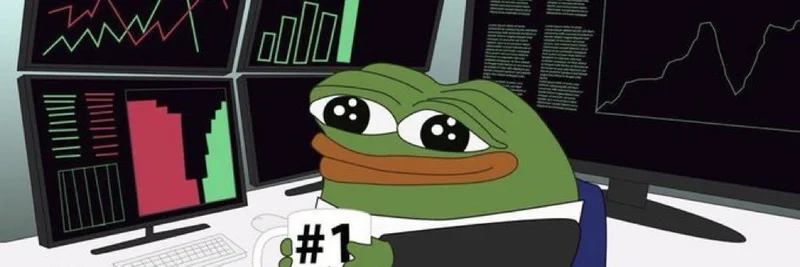In the fast-paced world of crypto, where opinions swing wildly between doom and boom, a recent tweet from @basedkarbon has sparked some intriguing discussions. The post questions the prevailing skepticism around Digital Asset Treasury (DAT) companies—public firms that stash cryptocurrencies like Bitcoin and Ethereum on their balance sheets as a core strategy. Instead of assuming they'll crash and burn, what if they thrive and end up hoarding massive amounts of crypto supply?
Understanding DAT Companies: The Basics
First off, let's break down what DAT companies are. These aren't your typical tech startups or exchanges; they're publicly traded entities that treat cryptocurrencies as treasury assets, much like how traditional companies hold cash or gold. Pioneered by folks like Michael Saylor of MicroStrategy, DATs buy and hold crypto, often leveraging their stock to raise more funds and acquire even more digital assets. This creates a flywheel effect: rising crypto prices boost the company's value, allowing them to buy more, and so on.
Examples include MicroStrategy (holding over 629,000 BTC), Japan's Metaplanet (with around 18,888 BTC), and Semler Scientific (about 5,021 BTC). Collectively, these firms control nearly 4% of Bitcoin's total supply and over 1% of Ethereum's circulating supply. That's no small potatoes—it's like having corporate giants act as permanent holders, reducing the available supply on the market.
The Bearish Consensus vs. the Optimistic Outlook
The tweet highlights a common narrative in crypto circles: "These DAT companies will end in tears sooner than you think and all these assets will be sold during the unwind." It's a valid concern. Over-leveraged smaller players—dubbed "long tail over-leveraged shit tcos" (treasury companies)—might indeed fold under pressure, flooding the market with sell-offs during a downturn.
But @basedkarbon flips the script: "What if it all works out?" Imagine a scenario where these DATs, especially the big guns like Saylor's MicroStrategy, Tom Lee's ventures, or others like SBET, keep stacking without selling. Crypto supply gets "vacuumed up" by these treasury companies (tcos) and stays off the market indefinitely. This could create structural scarcity, potentially driving prices higher as demand from ETFs, institutions, and retail investors continues to grow.
Nobody seems prepared for this upside, the tweet argues. While the crypto community braces for dumps, the reality might be a supply crunch that propels Bitcoin, Ethereum, and even altcoins to new heights.
Why This Matters for Meme Tokens
At Meme Insider, we're all about the fun, viral side of crypto, so how does this tie into meme tokens? Well, DAT companies aren't stopping at BTC and ETH. Recent trends show them diversifying into altcoins like Solana (SOL), Ripple (XRP), Binance Coin (BNB), Sui (SUI), and yes—even meme coins. As these firms seek yield and growth, they could start allocating to high-risk, high-reward assets like popular memes.
Think about it: If a DAT snaps up a chunk of a meme token's supply, it could lock away float, reduce selling pressure, and amplify pumps during hype cycles. This isn't just speculation; reports indicate DATs are experimenting with staking ETH for income and eyeing smaller, trendier assets. For blockchain practitioners chasing the next big meme, watching DAT moves could be key to spotting early opportunities.
Potential Impacts on the Broader Crypto Ecosystem
If the bullish case plays out, volatility might decrease for majors like BTC and ETH as supply tightens. Price discovery could shift, with spot markets leading while leveraged plays get squeezed. Investors might lean toward holding spot assets or cash, waiting for the next wave.
On the flip side, if smaller DATs unwind, it could create buying opportunities for whales. The tweet notes that larger holders aren't likely to sell, drawing a line between the "shit tcos" and established players. This selective optimism aligns with SEO-friendly searches around "crypto treasury strategies" and "Bitcoin corporate holdings," which are heating up as more firms adopt this model.
Regulatory tailwinds, like the GENIUS Act for stablecoins and improved accounting rules, are making it easier for DATs to thrive. Combine that with the rise of ETFs, and you've got a recipe for sustained inflows.
Wrapping It Up: Prepare for the Unexpected
@basedkarbon's tweet serves as a reminder not to get tunnel-visioned on the downside. In crypto, where narratives drive markets, considering the "what if it works" scenario could position you ahead of the curve. Whether you're into meme tokens, DeFi, or just HODLing BTC, keeping an eye on DAT companies might reveal the next big shift.
What do you think—will DATs be the heroes or the villains of the next cycle? Drop your thoughts in the comments, and stay tuned to Meme Insider for more insights on how these trends intersect with the wild world of memes.


